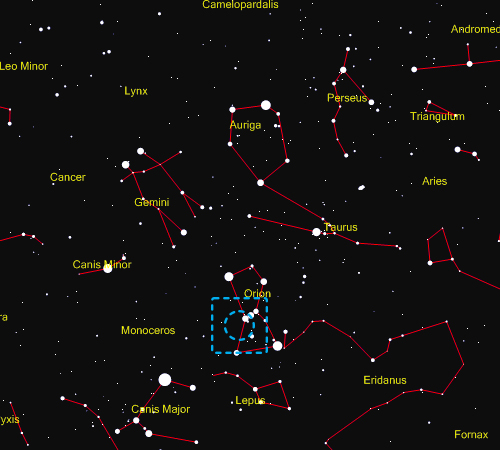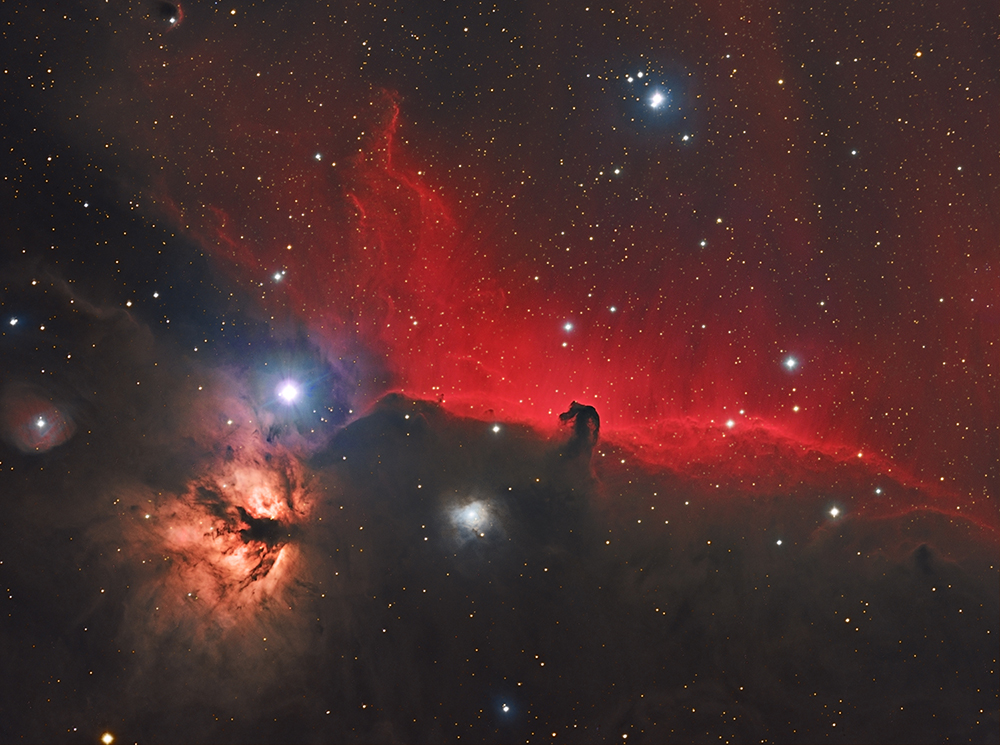NAME:
CATALOGUE:
OBJECT TYPE:
CONSTELLATION:
DISTANCE:
APPARENT MAGNITUDE:
APPARENT SIZE:
DIAMETER:
DISCOVERY:
BEST VIEWED IN:
RIGHT ASCENSION:
DECLINATION:
TELESCOPE:
DATA GATHERED:
EXPOSURES:
TOTAL TIME: |
|
The Flame & Horsehead Nebulae
Flame: NGC 2024 / Sh2-277
Horsehead:
B33 / IC 434
Flame: Emission Nebula
Horsehead: Absorption Nebula
Orion
1,400 light years
Flame: 2.0
Horsehead: 6.8
Flame: 30 x 30 arcminutes
Horsehead: 8 x 6 arcminutes
Flame: 11 light years
Horsehead: 3 light years
Flame: 1786, William Herschel
Horsehead: 1888, Williamina Fleming
December
05h 40m 59s
-02º 27’ 30”
Altair Astro 102 & 0.79x Reducer
11 nights, November & December 2016 and January 2017
Hα = 30 x 1800s
RGB = 25 x 300s each
21 hours 15 minutes |


